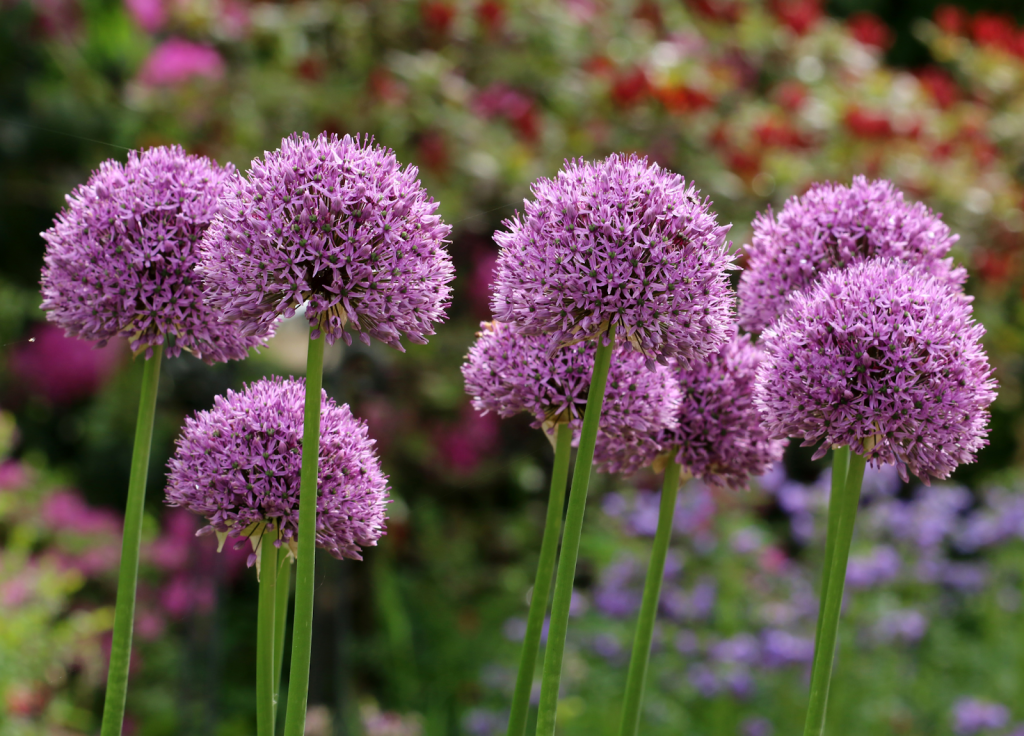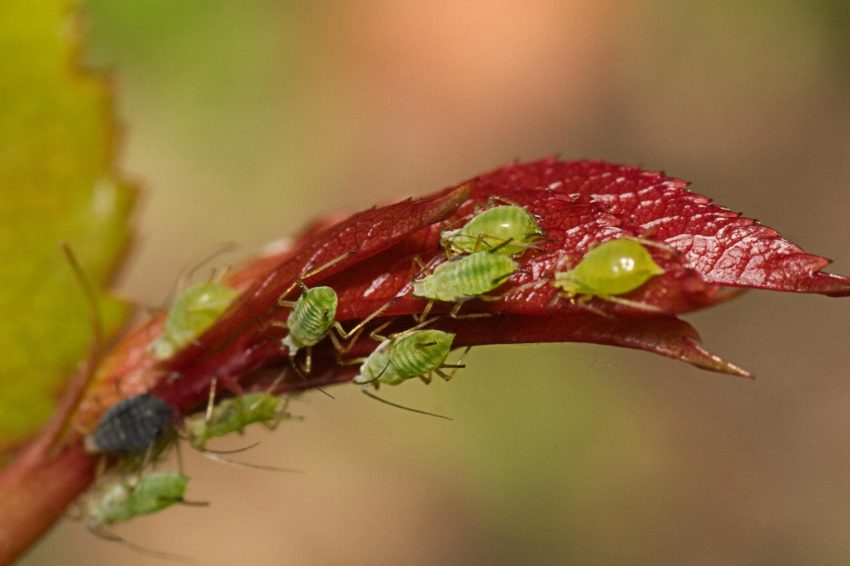Share this post
Aphids are tiny, soft-bodied sap suckers, but in commercial blocks, they cause big problems such as curled leaves, honeydew, sooty mold, viruses, and costly clean-ups at harvest. The good news is you can tilt the field or garden in your favour with plants aphids hate. In other words, the right companion plants can help keep this pest under control and reduce the risk of a full-blown aphid infestation.
This article focuses on practical, scale-friendly options: what to plant, where to plant it, and how to weave these choices into an IPM program without sacrificing bed space, yield, or spray coverage.
Why Plant Choice Matters in Aphid Management
No single plant makes aphids “disappear”, and repellent claims are often oversold. That said, strategically chosen companions can reduce pressure, delay colonisation, and enhance biological control, so you spray less, and when you do, you apply treatments more effectively.
Even if you’re using an aphid insecticide, companion and insectary plants can help keep the aphid population below action levels and protect beneficial insects like the ladybug and beetle species that actively feed on aphids between applications.
They do this by offering nectar, pollen, and shelter, which keeps natural enemies present and active in your block. At the same time, some companion plants act as “decoys” by drawing aphids away from your main crop, while others release scents that make it harder for aphids to locate their host plants. This layered approach reduces pressure, supports the effectiveness of your sprays, and helps your beneficial insects thrive rather than being wiped out.
Why Lettuce Needs Extra Attention
Some crops, like lettuce, need extra attention because certain aphids are especially hard to control. The lettuce aphid (Nasonovia ribisnigri) is a particular problem for lettuce growers, as it hides deep in heads and hearts, making sprays and treatments less effective. They multiply quickly, arrive from nearby weedy hosts, and can develop resistance to chemicals.
Prevention and Beneficial Insects
This makes prevention and early intervention critical. Strategically placing companion and insectary plants can help keep aphid populations in check. Beneficial insects, such as ladybugs and hoverflies, can suppress infestations, but they need support before aphid numbers spike. Repellent plants alone aren’t enough; using field edges, alleys, and in-bed patterns to encourage predators and manage ant activity can give your lettuce a head start against infestations.
Building a Strong Biological Backbone
If you’re looking for alternatives to neem oil, plant sweet alyssum for a strong biological backbone. It attracts hoverflies whose larvae feed heavily on aphids in lettuce and brassicas. Use 1-2 plants per 50 crops, choose long-blooming varieties, and irrigate alongside the crop to maintain their effectiveness.
Aphid-Repelling Scents from Alliums

Image source: Canvapro
Onions, garlic, and related alliums release sulfur-rich volatiles that disrupt aphids’ sense of smell, making it difficult for them to locate and choose your crops as hosts. In intercropped systems, garlic has delayed green peach aphid arrival by about a week and cut peak populations dramatically; researchers attribute this to volatile cues that force aphids to re-orient instead of settling. In the field, that delay can mean the difference between a tidy harvest and scrambling with a last-minute spray. Consider it your natural “keep aphids away” signal.
Plant single rows of garlic, chives, or spring onions with plenty of space in between, among brassicas, peppers, or even roses and ornamentals.
You can also add companion plants like sunflowers or marigold to help deter aphids and attract beneficial insects, including ladybugs. Avoid over-fertilising with nitrogen, as it can encourage aphid growth and reduce these benefits. These strategies provide a non-insecticidal way to support crop protection while minimizing chemical reliance.
Trap Plants That Aphids Love
While some flowers are said to repel aphids, nasturtiums are best used as trap crops; they’re irresistible to many aphid species. That’s a feature, not a bug: you can visually monitor infestations on nasturtiums, then prune or vacuum those plants to physically remove dense colonies before they migrate.
Place trap rows or patches 10–15 feet away from your cash crops to reduce spill-over. Pair traps with banker plants or insectaries so predators focus on the aphid buffet, the sacrificial nasturtiums, rather than your saleable crops.
Plants That Repel Aphids and Attract Their Predators
Two standouts deserve mention:
- Catnip/catmint (Nepeta spp.): Catnip produces nepetalactones that trigger insect irritant receptors. Research shows a broad repellent effect on various insects and signalling that attracts aphid predators. For commercial use, low, hardy Nepeta x faassenii cultivars along borders are practical; they flower long and don’t become weedy.
- Chrysanthemums (pyrethrum types): Dalmatian chrysanthemums (Chrysanthemum cinerariifolium) naturally produce pyrethrins and emit alarm pheromone analogs (e.g., EβF) that repel aphids while attracting ladybirds. You’re not harvesting them for extract; instead, place these living “chemical beacons” along headlands and access roads out of sprayer reach. Note: Pyrethrum sprays are broad-spectrum and can harm beneficials. Use the plant, not routine pyrethrum applications, if your goal is conservation biological control.
Field Layouts for Commercial Blocks
- Edges and alleys: Plant continuous ribbons of sweet alyssum along outer beds and at the ends of rows. This concentrates predators where winged aphids arrive and gives you service lanes that double as insectary corridors.
- Additive grids: In transplanted lettuce or brassicas, tuck alyssum seedlings into the crop at low density (1–2 per 50). This preserves lettuce count and still fuels hoverfly reproduction.
- Repellent “speed bumps”: Repellent “speed bumps”: Interplant strips of garlic or spring onion between susceptible blocks during peak flights. These strips can be harvested early or flail-mowed before they overshadow the cash crop.
- Trap islands: Site nasturtium patches a few yards off-block, downwind of prevailing aphid sources (weedy margins, volunteer brassicas). Make removal easy, designate a crew day to prune infested traps into bags and bin them.
Smart Habitat Tweaks for Stronger Crop Protection
- Feed the right predators: Hoverflies do the heavy lifting in lettuce; lacewings, ladybirds, and parasitoids help across crops.
- Mind the fertilizer: Excess nitrogen spikes aphid fecundity. Aim for steady growth curves and avoid soft, lush tissue that invites outbreaks.
- Sanitation counts: Remove weedy hosts and volunteer brassicas near house blocks and canals. Clip off heavily infested trap plants before winged forms take flight.
- Scout by species: Green peach aphid colonises older lettuce leaves; lettuce and foxglove aphids bury into hearts. Sample accordingly, and react before shipping quality is at risk.
Targeted Companion Planting: A Crop-by-Crop Guide
- Lettuce and leafy brassicas: Sweet alyssum grid + garlic edges + nasturtium traps off-block. Keep spray windows narrow and targeted because the lettuce aphid hides deep.
- Solanaceous (peppers, potatoes): Allium strips and Nepeta borders to suppress early flights and feed generalist predators.
- Ornamentals/roses near production: Onions interplanted in rose rows reduce aphid pressure; catmint as a border provides long bloom and predator draw. (Treat ornamentals as your “training ground” for beneficial.)
- Mixed salad operations: Use alyssum along wash-pack access, headlands, and between successions. Keep blossoms outside harvest lanes to avoid contamination.
Final Thoughts
Plants won’t replace your entire aphid program, but they will change the math. Alliums blur the scent trail, nasturtiums trap infestations, and chrysanthemums with catmint disrupt aphid behavior. Sweet alyssum then feeds hoverflies, helping you buy time, preserve residues, and keep quality high.For commercial growers needing a fast, reliable aphid elimination, consider Protection Plus. This proven aphid insecticide fits neatly into integrated programs, helping you control outbreaks quickly while companion plants, predators, and cultural methods handle the long game.

